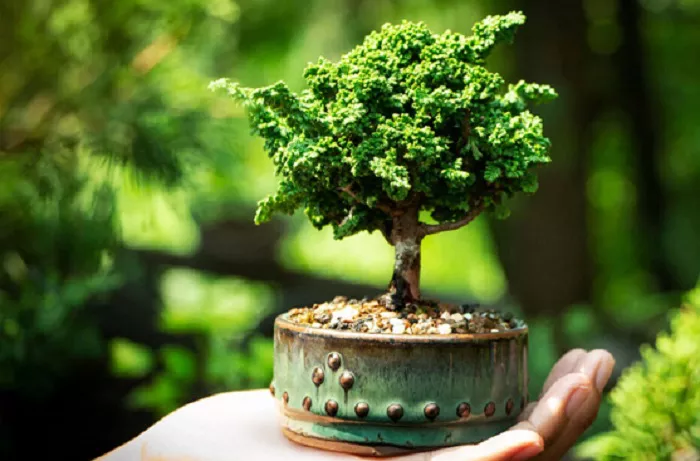Bonsai trees, those exquisite miniature marvels, have long captivated gardening enthusiasts and casual admirers alike. The question of how long it takes for a bonsai tree to grow is one that many curious minds ponder. The answer, however, is not as straightforward as one might think. It involves a delicate interplay of factors such as species, cultivation methods, and the nurturing environment. Let’s delve into the fascinating journey of bonsai growth and uncover the secrets behind these living works of art.
Factors Influencing Bonsai Growth
Species Variations
Different bonsai species have distinct growth rates. For instance, juniper bonsai trees are relatively fast growers, with some species able to achieve a significant amount of growth within a few years. On the other hand, species like the Chinese elm may take longer to reach a similar stage. Understanding the natural growth patterns of each species is crucial for setting realistic expectations.
Cultivation Methods
The way a bonsai is cultivated also plays a vital role. Traditional methods, such as growing from seeds, can be a lengthy process. It may take several years for a seedling to develop into a mature bonsai. In contrast, using cuttings or grafting techniques can significantly shorten the time frame, as these methods allow the tree to bypass the initial seedling stage and focus on developing the desired shape and form.
Environmental Factors
The environment in which a bonsai is grown is another key determinant. Optimal conditions, including the right amount of sunlight, water, and temperature, can accelerate growth. For example, a bonsai placed in a well-lit, temperature-controlled indoor environment may grow faster than one exposed to harsh outdoor conditions. Additionally, the quality of the soil and the frequency of fertilization can also impact the growth rate.
Stages of Bonsai Development
Seedling Stage
When starting from seeds, the initial stage is the seedling phase. This period can last from a few months to a couple of years, depending on the species. During this time, the young tree is delicate and requires careful attention to ensure its survival. Regular watering, protection from extreme weather, and appropriate fertilization are essential.
Shaping and Training
Once the seedling has grown into a young tree, the shaping and training process begins. This involves pruning, wiring, and other techniques to guide the tree into the desired form. This stage can take several years, as the tree needs time to adapt to the new shape and develop the necessary branches and foliage.
Maturation
The maturation stage is when the bonsai tree starts to resemble its final form. This can take anywhere from five to ten years or more, depending on the species and the level of detail required. During this period, the focus is on refining the shape, maintaining the health of the tree, and ensuring that it continues to grow in a balanced manner.
Tips for Accelerating Bonsai Growth
Proper Care and Maintenance
Providing the right care is essential for healthy growth. Regular watering, appropriate fertilization, and timely pruning are all critical. Each species has specific requirements, so it’s important to research and understand the needs of your particular bonsai.
Ideal Growing Conditions
Creating an optimal environment can also speed up the growth process. This includes providing the right amount of sunlight, maintaining a suitable temperature range, and ensuring good air circulation. For indoor bonsai, this may involve using grow lights and temperature control devices.
Expert Techniques
Learning and applying expert techniques, such as advanced pruning and wiring methods, can help shape the tree more effectively. This not only enhances the aesthetic appeal but also promotes healthy growth. Consulting with experienced bonsai growers or joining a local bonsai club can be invaluable sources of knowledge and support.
Common Challenges and Solutions
Pest and Disease Management
One of the common challenges in bonsai cultivation is dealing with pests and diseases. Regular inspection and prompt treatment are essential to prevent damage. Using organic pesticides and maintaining a clean growing environment can help minimize these issues.
Overwatering and Underwatering
Finding the right balance of water is crucial. Overwatering can lead to root rot, while underwatering can cause the tree to wilt. Understanding the specific water needs of your bonsai species and monitoring the soil moisture levels can help avoid these problems.
Nutrient Deficiencies
Nutrient deficiencies can also impact growth. Regular fertilization with a balanced bonsai-specific fertilizer can help ensure the tree receives the necessary nutrients. Additionally, periodic soil testing can identify any deficiencies and allow for timely adjustments.
Conclusion
The journey of growing a bonsai tree is a rewarding yet patient-demanding process. While the time it takes for a bonsai to mature varies widely, understanding the factors that influence growth and applying proper care techniques can help accelerate the process. Whether you are a seasoned gardener or a novice enthusiast, the beauty and tranquility that bonsai trees bring make the effort well worth it.


